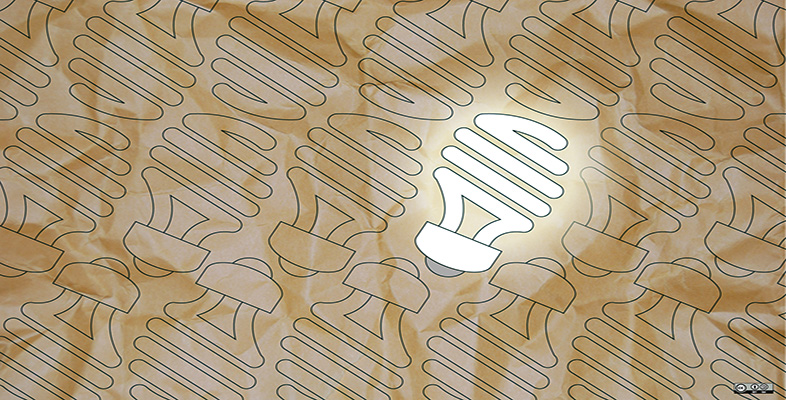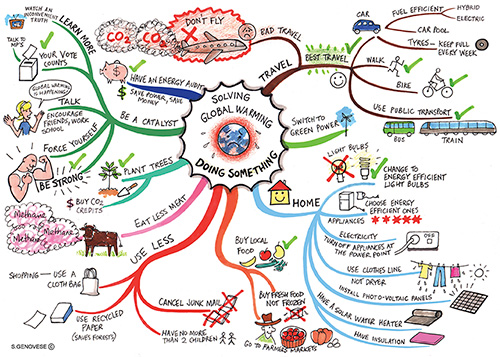3.1 Representations for communicating
As tools for communicating ideas, representations have a variety of roles. They can be used to create and present a vision or concept; for example, the drawing in Figure 11b is a representation that is used to convey the designer’s vision for a car interior. Such representations can be constructed by individuals, or in a process of cooperative design as opportunities for innovation are discussed and explored within a design team. For example, mind maps such as the one exploring solutions to global warming in Figure 12, are often used in design meetings to visually explore opportunities and options, and to foster creativity.
As we discovered in Section 2, representations are often used in design meetings to support dialogue and debate. They provide a shared visual context that can be pointed at, argued about, and modified. In this mode, representations serve as a focal point for discussion and help keep dialogue efficient and effective. Representations also act as collective records; they can be used to organise and store knowledge created through group interaction in a design meeting, and they allow team members to reflect on and interpret the ideas of other members.

